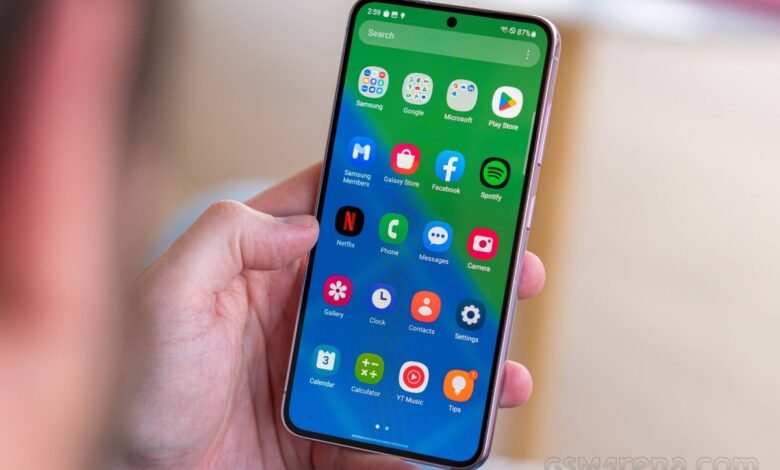Fixing Samsung Galaxy Touchscreen Problems

Samsung Galaxy smartphones are known for their advanced features and sleek design, but even the best devices can experience issues. One common problem that many users encounter is a malfunctioning touchscreen. Whether the screen is unresponsive, lags, or behaves erratically, touchscreen issues can be frustrating. In this comprehensive guide, we will explore the causes of Samsung Galaxy touchscreen problems and provide detailed solutions to fix them.
Understanding the Common Causes of Touchscreen Issues
Before diving into the solutions, it’s crucial to understand what might be causing your Samsung Galaxy’s touchscreen problems. The most common causes include:
Software Glitches
Software glitches are among the primary reasons for touchscreen problems. This could be due to a recent update, conflicting apps, or even a corrupted operating system. Identifying software-related issues early can save you from more severe problems down the road.
Physical Damage
Physical damage is another leading cause of touchscreen issues. A cracked screen, exposure to water, or even severe drops can cause the touchscreen to become unresponsive. If your phone has experienced any physical trauma, this could be the culprit.
Overheating
Samsung Galaxy phones can overheat, especially during prolonged use or when running intensive apps. Overheating can lead to the touch screen becoming less responsive or even completely unresponsive.
Hardware Malfunctions
In some cases, the problem may be related to hardware malfunctions. Internal components, such as the digitizer, could be damaged or faulty, leading to touchscreen problems.
Battery Issues
Low battery or a faulty battery can also affect touchscreen responsiveness. If your phone’s battery is depleted or malfunctioning, it could cause the touchscreen to act erratically.
Effective Solutions to Fix Samsung Galaxy Touchscreen Problems
Now that we have identified the common causes, let’s move on to the solutions. These steps will help you fix touchscreen issues on your Samsung Galaxy smartphone.
Restart Your Samsung Galaxy Device
Sometimes, the simplest solution is the most effective. Restarting your device can help resolve minor software glitches that may be causing touchscreen problems. To restart your Samsung Galaxy:
- Press and hold the power button until the power menu appears.
- Tap on “Restart” and wait for your device to reboot.
Update Your Software
Keeping your software up-to-date is essential for the smooth functioning of your device. Samsung regularly releases updates to fix bugs and improve performance. To check for updates:
- Go to “Settings.”
- Scroll down and select “Software update.”
- Tap on “Download and install” to check for available updates.
If an update is available, download and install it. After the update, check if the touchscreen issue is resolved.
Remove Screen Protector
A poorly applied screen protector can interfere with the touchscreen’s sensitivity. If you have a screen protector on your device, consider removing it and checking if the touchscreen becomes more responsive.
Boot in Safe Mode
Booting your Samsung Galaxy in Safe Mode allows you to determine if third-party apps are causing the touchscreen problems. Safe Mode disables all third-party apps, so if the touchscreen works fine in Safe Mode, a third-party app is likely the culprit. To boot in Safe Mode:
- Press and hold the power button until the power menu appears.
- Press and hold the “Power off” option until the “Safe mode” prompt appears.
- Tap “Safe mode” and wait for your device to restart.
In Safe Mode, test the touch screen. If it works fine, try uninstalling recently installed apps to identify the problematic one.
Perform a Factory Reset
If none of the above solutions work, performing a factory reset may be necessary. A factory reset will erase all data on your device, so make sure to back up your important files first. To perform a factory reset:
- Go to “Settings.”
- Scroll down and select “General management.”
- Tap on “Reset” and choose “Factory data reset.”
- Follow the on-screen instructions to complete the reset.
After the reset, set up your device again and check if the touchscreen issue is resolved.
Check for Physical Damage
If your touchscreen issues persist after trying the above solutions, it’s time to inspect your device for physical damage. Check for cracks, dents, or other signs of damage on the screen. If you find any, it’s best to visit a professional repair service to get your screen repaired or replaced.
Use an External Mouse
If your touchscreen is completely unresponsive, using an external mouse can help you navigate your device. You can connect a USB OTG (On-The-Go) adapter to your Samsung Galaxy and then connect a mouse. This will allow you to back up your data or perform a factory reset if needed.
Calibrate the Touchscreen
Calibrating the touchscreen can help improve its accuracy and responsiveness. While newer Samsung Galaxy devices don’t have a built-in calibration tool, you can use third-party apps available on the Google Play Store. Download a trusted calibration app and follow the on-screen instructions to recalibrate your touchscreen.
Clear Cache Partition
Clearing the cache partition can help resolve issues caused by corrupted system cache files. This process won’t delete your data and can be done via the recovery mode. To clear the cache partition:
- Turn off your Samsung Galaxy device.
- Press and hold the Volume Up button and the Bixby button (if available), then press and hold the Power button.
- When the Samsung logo appears, release all buttons.
- Use the Volume Down button to navigate to “Wipe cache partition” and press the Power button to select it.
- Once the process is complete, select “Reboot system now.”
Contact Samsung Support
If you’ve tried all the above solutions and your touchscreen problems persist, it’s time to contact Samsung Support. They can provide further assistance, and if your device is still under warranty, they may offer a repair or replacement.
Preventing Future Touchscreen Issues
To avoid encountering touchscreen problems in the future, here are some preventive measures you can take:
Handle Your Device with Care
Always handle your Samsung Galaxy with care. Use a protective case and avoid dropping your phone or exposing it to harsh conditions.
Regularly Update Software
Keep your device’s software up-to-date by regularly checking for updates. This ensures that your phone is running the latest software with bug fixes and performance improvements.
Avoid Overheating
Prevent your device from overheating by avoiding prolonged use of intensive apps and games. Give your phone breaks during extended usage to allow it to cool down.
Use a Quality Screen Protector
If you choose to use a screen protector, make sure it’s of high quality and properly applied. A good screen protector should not interfere with the touchscreen’s sensitivity.
Monitor Battery Health
Regularly check your battery’s health and replace it if necessary. A healthy battery ensures that your device functions optimally, including the touchscreen.
Conclusion
Visit my website to find comprehensive solutions for touchscreen problems on your Samsung Galaxy. By following the steps outlined, you can quickly restore your touchscreen’s functionality and enjoy a seamless experience with your device. Remember to take preventive measures to avoid future issues and keep your Samsung Galaxy in top condition.

